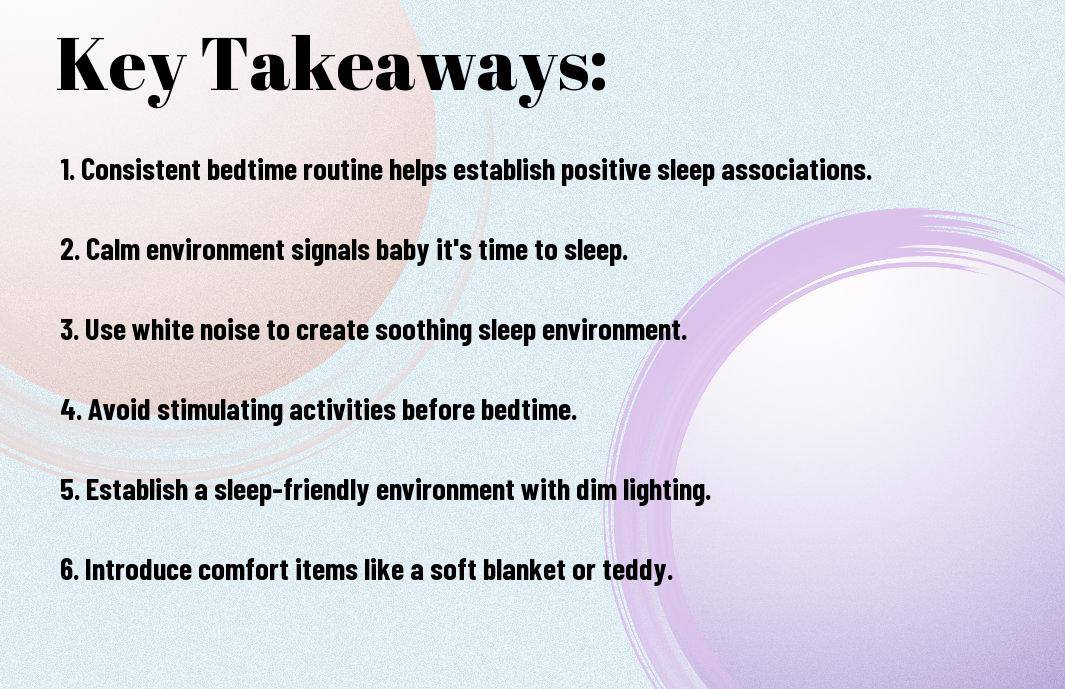tips, tricks and guides for parenthood
Establishing positive sleep associations is crucial for promoting healthy sleeping habits in babies. These cues can significantly impact a baby's ability to settle down for naps and bedtime. By creating a consistent and calming sleep environment, parents can help their little ones develop a routine that signals it's time to sleep. Understanding the importance of sleep associations and how to implement them effectively can lead to better sleep for both babies and parents. In this blog post, we will explore the significance of sleep cues and provide tips on how to establish positive associations to improve your baby's sleep patterns.

Consistency and routine are key components in establishing healthy sleep habits for your baby. By following a consistent bedtime routine, you can create a sense of predictability for your little one, helping them understand when it's time to sleep. Whether it's a warm bath, a bedtime story, or gentle lullabies, sticking to the same sequence of events each night can signal to your baby that sleep is approaching. Check out Creating Positive Sleep Associations for more tips on building a soothing bedtime routine.
Setting up a sleep-inducing environment is necessary for helping your baby understand that bedtime is for sleeping. Keep the room cool, dark, and quiet to promote deep and restful sleep. Using white noise machines or soft music can also create a calming atmosphere that lulls your baby to sleep. Additionally, having a comfortable and safe sleep space, free from distractions, can help your little one settle down easily. Keep in mind, the aim is to create an environment that promotes relaxation and signals to your baby that it's time to rest.
Self-soothing strategies are crucial for helping babies learn to fall asleep independently and stay asleep through the night. Encourage your baby to self-soothe by putting them down to sleep when drowsy but still awake, so they can learn to settle themselves to sleep. This may involve some initial protest, but with consistency, babies can develop this valuable skill.
Introducing comfort objects, such as a soft toy or a muslin cloth, can provide babies with a familiar and comforting sleep cue. These objects can help babies feel secure and relaxed as they drift off to sleep. Be sure to choose safe objects that are suitable for sleep time and avoid anything that poses a suffocation risk.
Comfort objects and sleep cues can play a significant role in establishing positive sleep associations for babies. These objects can become a signal that it's time to sleep, helping babies feel secure and calm in their sleep environment. It's important to introduce these objects early on and consistently use them during bedtime to reinforce the association.
Transitioning away from negative sleep associations can be a challenging yet crucial step in creating positive sleep cues for babies. It involves gradually replacing the negative association with a new, more positive one. For example, if a baby associates falling asleep with being rocked, you can try gently rocking them less and less each night until they learn to fall asleep independently.
Dealing with night wakings and feedings is a common challenge for parents, especially during the early months. It is important to distinguish between hunger cries and comfort cries, as responding to every cry with a feed can inadvertently reinforce night waking. Establishing a bedtime routine and creating a comfortable sleep environment can help minimise night wakings. If your baby does wake up, try to soothe them back to sleep without feeding if you suspect they are not genuinely hungry.
Regarding monitoring your baby's sleep patterns, keeping a sleep diary can be a useful tool. Note down the times your baby goes to sleep, wakes up, and any night awakenings. This will help you identify any patterns or inconsistencies in their sleep routine, allowing you to make informed adjustments to improve their sleep.
As your baby grows and develops, their sleep needs will change. It's vital to adapt your sleep strategies accordingly. For instance, as they transition from three naps to two, or drop night feeds, you'll need to adjust their sleep cues and routines to suit their evolving requirements. Keep an eye on their development milestones and be prepared to make changes to support their healthy sleep habits.
Establishing positive sleep associations for babies is crucial in promoting healthy sleep habits. By creating consistent bedtime routines and associating certain cues with sleep, such as gentle lullabies or dimming the lights, parents can help their babies understand when it's time to rest. These cues not only signal the beginning of sleep but also provide comfort and security, making the transition to bedtime smoother. It is important to be consistent with these associations to establish a predictable sleep routine for babies. By incorporating positive sleep cues, parents can help their babies develop healthy sleep patterns and improve their overall quality of sleep.
A: Sleep associations are the cues or conditions that a baby associates with falling asleep. They can be positive or negative and can greatly impact a baby's sleep patterns.
A: You can create positive sleep cues for your baby by establishing a consistent bedtime routine, using calming activities before bed, and creating a sleep-friendly environment.
A: Positive sleep associations help babies learn to self-soothe and fall asleep independently. They also promote better sleep quality and longer sleep durations for babies.
A: Examples of positive sleep cues for babies include a warm bath before bedtime, gentle lullabies, dimming the lights in the room, and reading a bedtime story.
A: To break your baby's negative sleep associations, gradually introduce new positive sleep cues while phasing out the old ones. Consistency and patience are key in this process.